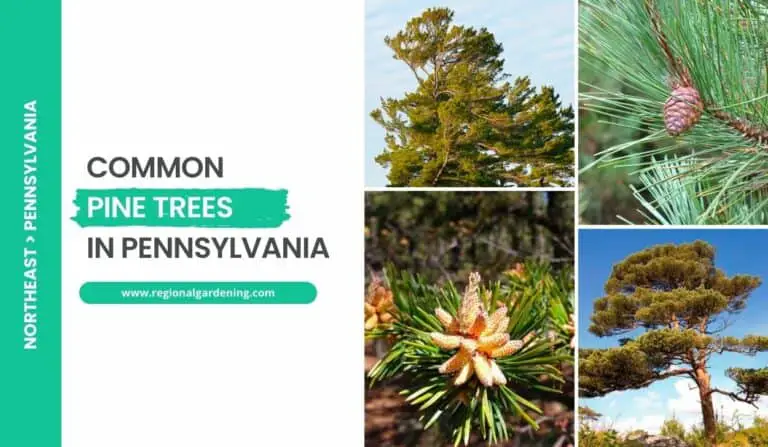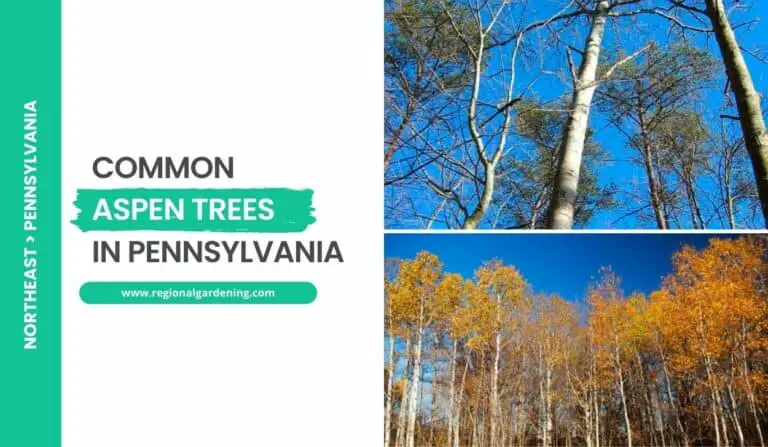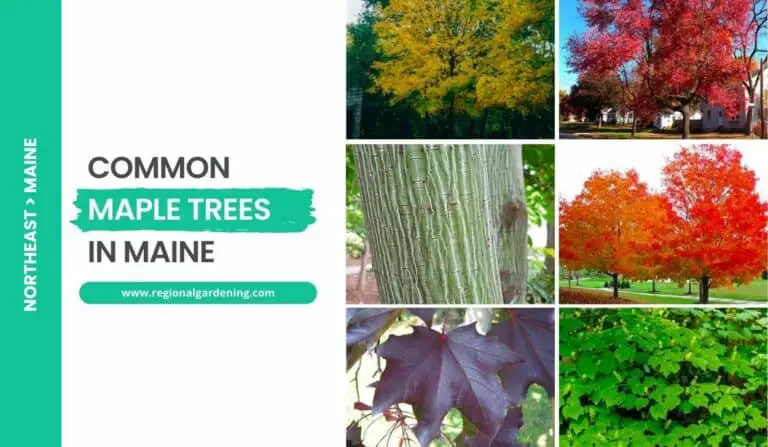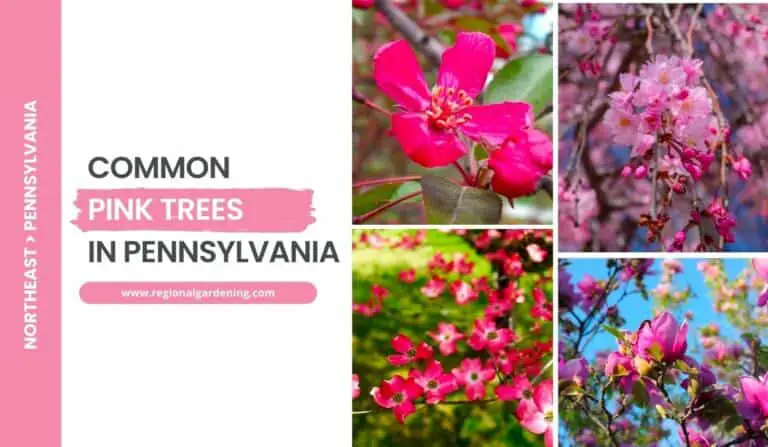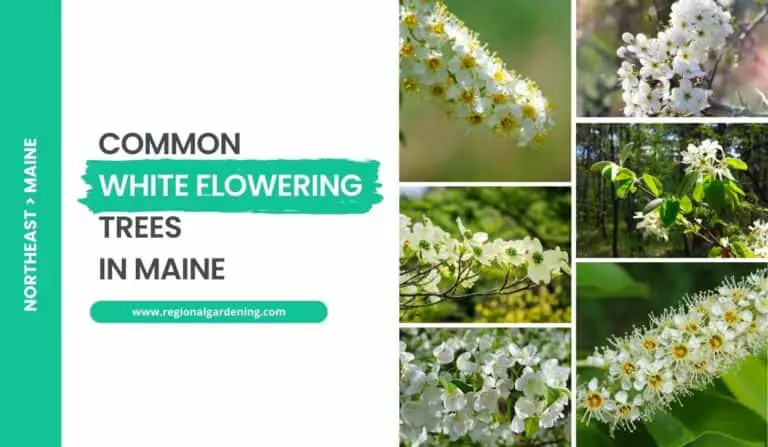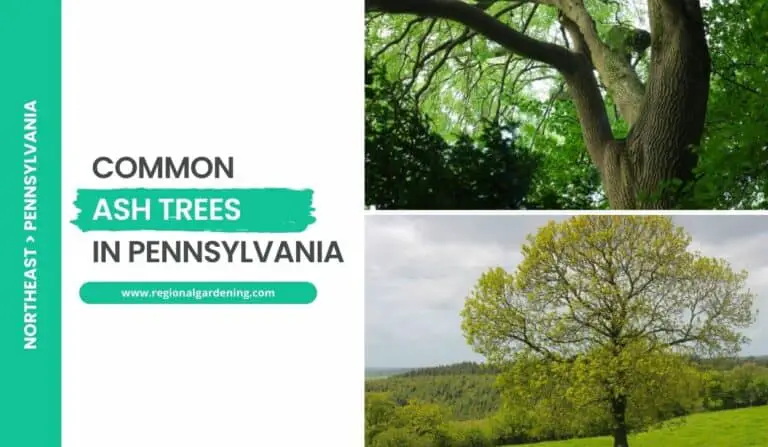2 Elm Trees In Pennsylvania (Photos & Identification)
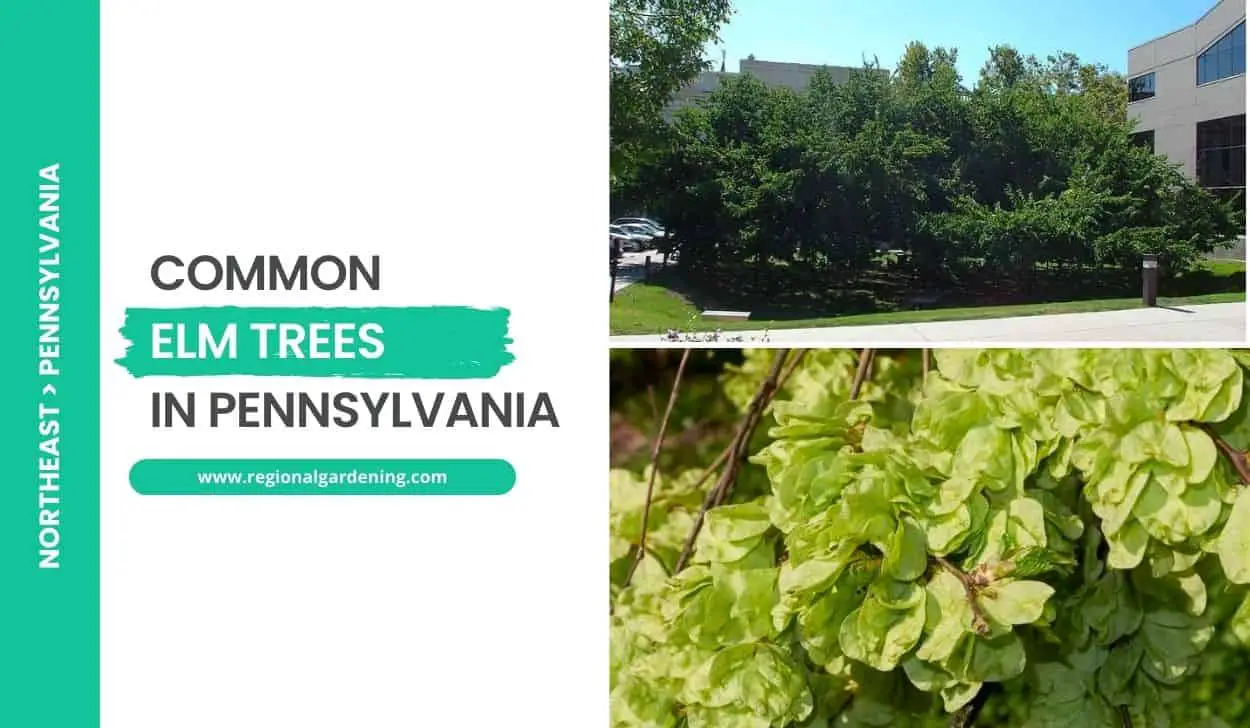
Various elm species have graced Pennsylvania’s landscape, each with its own set of characteristics and uses. These trees, ranging from the majestic American Elm to the medicinal Slippery Elm, have played critical roles in local ecosystems and communities.
However, the specter of Dutch elm disease has cast a long and difficult struggle.
In this article, we will look at the rich heritage of elm trees in Pennsylvania, their cultural and ecological significance, and ongoing efforts to protect and revitalize these cherished members of the state’s green heritage.
So, let’s begin.
1. American Elm
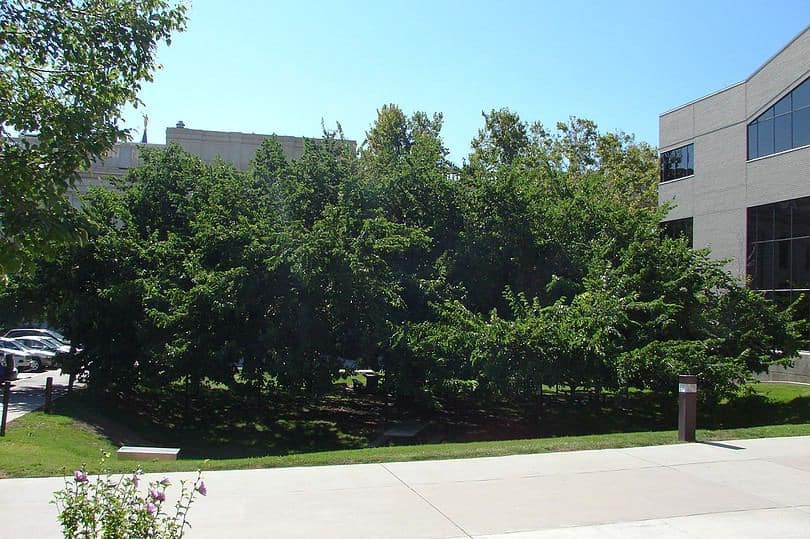
- Scientific Name: Ulmus americana L.
- Common Name(s): American Elm
- Mature Height: 75-100 feet (22-30 meters)
- Native Region: North America
- Flowers: No flowers
- Fruit: Oval-shaped seed surrounded by a thin papery wing, deeply notched at the tip, borne in clusters in spring
- Uses: The hard, tough wood of the American Elm is highly prized and used for the manufacture of boxes, barrels, and furniture.
The American Elm, scientifically known as Ulmus americana, is a huge and highly valued shade tree that can reach a mature height of 75-100 feet and has a drooping crown that gives it a characteristic vase-shaped appearance.
The American Elm’s leaves are alternate and simple, measuring about 4-6 inches long, unequal at the base, and tapered at the tip, with a smooth or slightly rough upper surface. The leaves are usually soft-hairy below and have prominent veins, and they are attached to short petioles.
The twigs of the American Elm are slender and zigzag, with a brown color. They are mostly hairless but may have slight hairiness. The leaf buds are small, measuring 18 to 14 inches long and flattened, and are often located below the larger flower buds, which have red-brown scales and smooth or downy surfaces.
The bark of the American Elm is dark gray to gray-brown, with long corky ridges split by diamond-shaped cracks on older trees, and alternating layers of white and brown.
The American Elm is a North American native that can be found locally throughout Pennsylvania, particularly in damp places, and flourishes in a variety of environments such as floodplains, riverbanks, and woodlands.
While the American Elm does not have flowers, it does produce fruits in the form of seeds enclosed by oval-shaped, thin papery wings with a deep groove at the apex that is about 12 inches long and ripen in spring.
American Elm is valued by Pennsylvania residents for its hard, tough wood, which is difficult to split but has many uses, including the production of boxes, barrels, and furniture. Its towering presence and broad canopy also make it a popular choice for providing shade in parks, gardens, and residential areas.
2. Slippery Elm
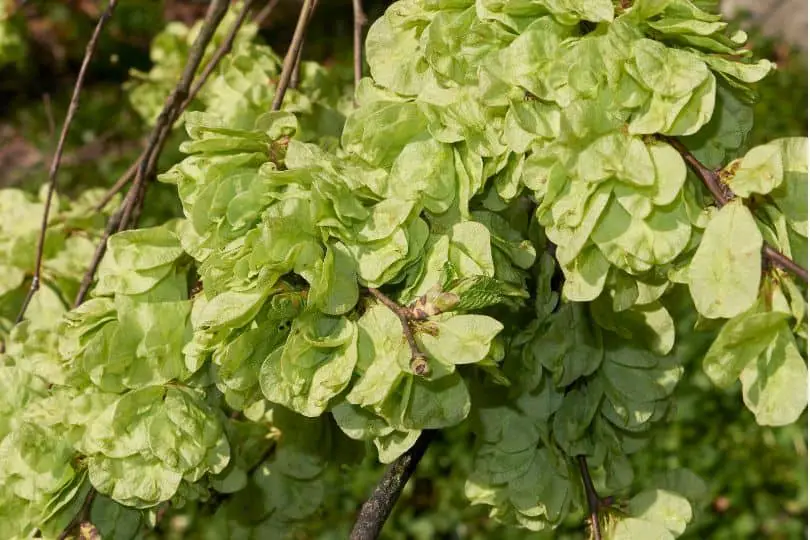
- Scientific Name: Ulmus rubra Muhl.
- Common Name(s): Slippery Elm
- Mature Height: 60–80 feet (18–24 meters)
- Native Region: North America
- Flowers: No Flowers
- Fruit: ¾” long, wing margin not hairy, slightly notched at the tip
- Uses: The inner bark of the slippery elm is used medicinally for soothing sore throats and coughs. The wood of slippery elm is commonly sold alongside American elm.
Slippery Elm (Ulmus rubra) is a medium-sized tree that is commonly found near streams in Pennsylvania landscapes. It can reach a mature height of 60 to 80 feet and has a distinctive appearance. The leaves of slippery elm are alternate, simple, and larger than those of American elm. They are about 5 to 7 inches long, with a very rough upper surface and a rough or soft-hairy lower surface.
The twigs of the slippery elm tree are stouter and grayish, with a rough texture, and the buds are slightly larger and more round than those of the American elm, with brown to almost black bud scales that are rusty-haired. The fruit is similar to that of the American elm, but slightly larger at 34″ long. The fruit’s wing margin is not hairy and is slightly notched at the tip.
The bark of the slippery elm is reddish-brown, softer, and dotted with irregular fissures. The tree gets its common name from its sticky and fragrant inner bark. A cross-section of the bark shows a uniform brown hue. The slippery elm tree’s crown does not droop like the American elm’s.
Slick elm trees are extensively used for their medicinal benefits in Pennsylvania. The tree’s inner bark is known for its soothing effects on sore throats and coughs. Infusing it into hot water to make a relaxing tea might be used as a natural cure. Furthermore, the wood of the slippery elm tree is frequently sold with American elm wood.
It is critical to provide well-drained soil and appropriate moisture while caring for slippery elm trees in Pennsylvania landscapes. These trees like full sun to partial shade and may grow in a wide range of soil conditions. Regular pruning may be required to keep the ideal shape and avoid disease or pest problems.
Common Elm Trees In Pennsylvania – Frequently Asked Questions (FAQs)
Let us go over some of the most frequently asked questions about elm trees in Pennsylvania on the internet.
What are some of the most common elm trees in Pennsylvania?
The most common elm trees in Pennsylvania are the American Elm (Ulmus americana), which was once abundant but is now struggling due to Dutch elm disease, and the Slippery Elm (Ulmus rubra), which is known for its medicinal inner bark.
Additionally, the Winged Elm (Ulmus alata), with its distinctive corky branches, and the non-native Siberian Elm (Ulmus pumila), which is somewhat resistant to Dutch elm disease, can be found in various regions. Dutch elm disease has unquestionably had an impact on elm populations throughout Pennsylvania, prompting ongoing efforts to preserve and restore these iconic trees. Despite the challenges, these elms remain an important part of Pennsylvania’s natural landscape.
Are elm trees used by locals in Pennsylvania?
Locals in Pennsylvania have traditionally used elm trees for a variety of purposes. Because of its resistance to splitting, elmwood has found applications in the manufacture of furniture, cabinets, flooring, and tools.
Furthermore, Native American tribes and early settlers valued the inner bark of the slippery elm for its mucilaginous properties, which were used in teas and poultices to treat ailments such as sore throats and digestive problems. Furthermore, because of their aesthetic appeal and ability to provide shade, these trees have become popular choices for landscaping in urban and suburban areas.
However, the spread of Dutch elm disease has limited their use, necessitating ongoing conservation and restoration efforts.
Similar Articles
- Common Flowering Trees In Pennsylvania
- Common Maple Trees In Pennsylvania
- Common Cherry Trees In Pennsylvania
- Common Pine Trees In Pennsylvania
- Native Locust Trees In Pennsylvania
- Common Nut Trees In Pennsylvania
- Common Cedar Trees In Pennsylvania
- Common Palm Trees In Pennsylvania
- Common Birch Trees In Pennsylvania
- Common Aspen Trees In Pennsylvania
- Common Spruce Trees In Pennsylvania
- Common Ash Trees In Pennsylvania
- Common Oak Trees In Pennsylvania
- Pink Flowering Trees In Pennsylvania
- White Flowering Trees In Pennsylvania
- Purple Flowering Trees In Pennsylvania
Sources
The Regional Gardening team makes sure that the information in our articles is accurate by only using sources that are known to be trustworthy. Some of these sources are peer-reviewed journals from government agencies, well-known universities, and scientific research organizations.
- Native Plant Resources, Pennsylvania Native Plant Society
- Trees & Shrubs Varieties, PennState Extension
- Landscaping With Natives, Pennsylvania Department Of Conservation, & Natural Resources.
- Explore Pennsylvania Forests, Pennsylvania Department Of Conservation, & Natural Resources.


